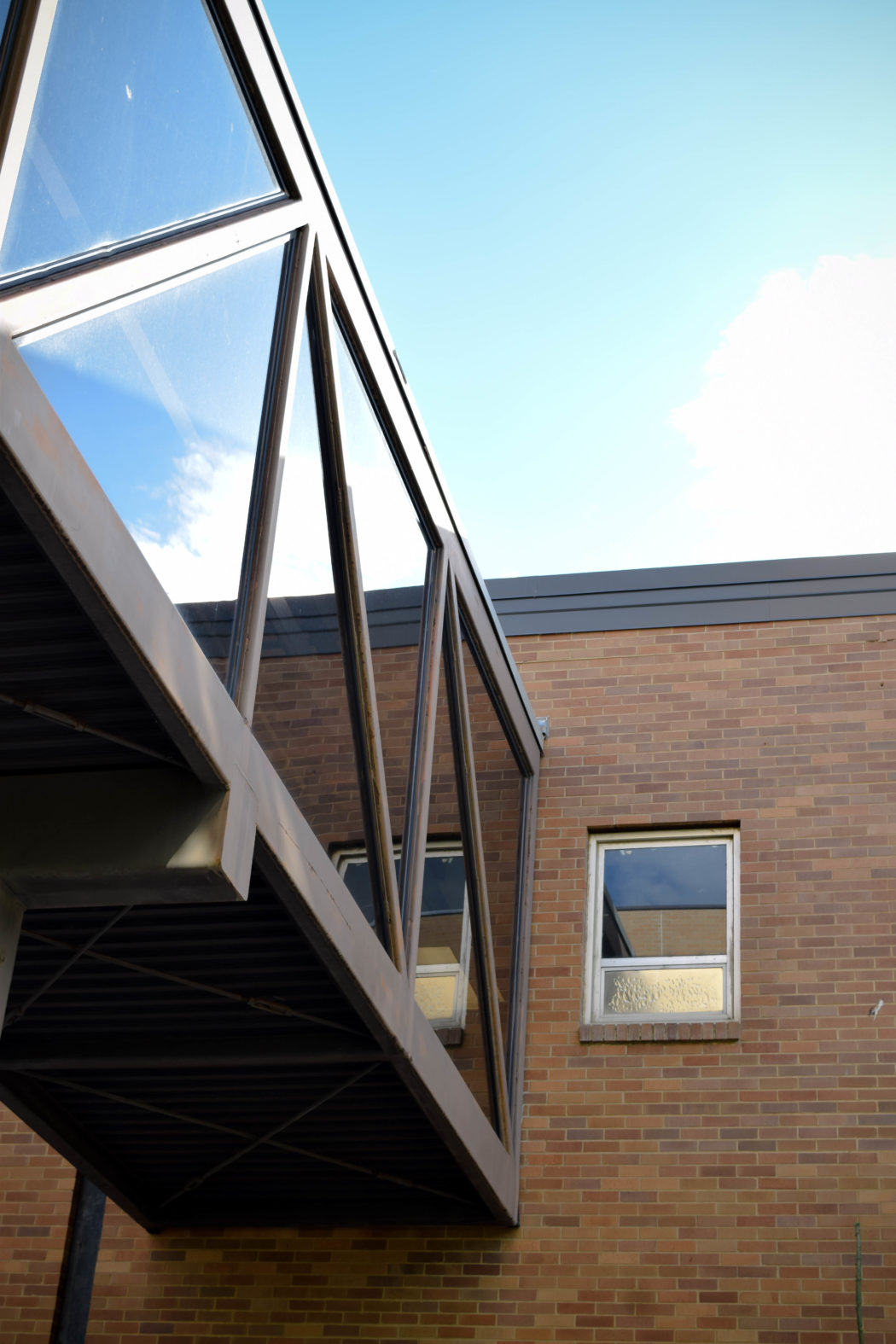Making the USU campus a safer place … for the birds
According to an article in the Washington Post, window collisions are the number one human-related killers of birds in the United States, second only to cats.
Utah State University is no exemption from this statistic. From January to May, the skywalk between the engineering lab and the engineering building alone logged 110 bird strikes.
That’s why the Utah State Aggie Birds club was formed: to work with facilities and builders to make USU a bird-friendly campus.
“With window collisions, the birds get less and less or one bird takes over the area that used to be diverse and now it’s no longer diverse,” said Daniel Johnson, a member of Utah State Aggie Birds. “So, I feel strongly about keeping bird populations healthy.”
Though it may seem like a minor issue or rare occurrence, the problem is bigger and more complicated than most people realize.
“We estimate about a bird a day for the nine buildings that we’ve been following,” said Kimberly Sullivan, associate professor of the biology department at USU and adviser for Utah State Aggie Birds, speaking about the number of bird-window collision deaths the university sees every year.
The nine buildings, or problem areas, Aggie Birds are following are: most of the fine arts building, the walkway between the engineering building and engineering lab, the walkway between the engineering lab and Science Engineering Research building, the Biology and Natural Resources building, the Aggie Recreation Center, the USU Credit Union, the University Inn, the Eccles Conference Center, and Old Main.
 Autumn Dunda
Autumn Dunda Though the problem has not been completely fixed, Aggie Birds have prepared preventative measures to help alleviate the issue.
Some of these measures include relocating vegetation farther away from buildings, placing laminates on windows, and even installing new fritted windows (frit is the term for the little white ceramic dots added inside the glass so a bird will see the dots, recognize it cannot fit in between them, and avoid crashing into the window).
One of the major complications Aggie Birds copes with is the spread of the incidents, as there is no specific place that these incidents happen.
“It’s not necessarily the same building and the same location…the problem shifts around campus,” Sullivan said.
Some buildings have more bird strikes in the winter, while some have more bird strikes in the summer. Some—like the engineering building skywalk—are problematic year-round.
Consequently, there is no single solution for the entire campus.
“It’s not like one-shoe-fits-all,” Sullivan said. “You have to look at what’s causing the problem at a particular location and then how you could solve it.”
For example, the University Inn’s mirrored tiles cannot be tampered with because that would void the warranty, so altering the landscaping is the only option there.
However, at the BNR-NR skywalk, Aggie Birds are considering adding an artistic film to the windows to prevent bird strikes.
So far, facilities—such as the USU Credit Union, which has offered to prevent a crab apple tree from fruiting this fall to reduce the number of bird strikes at the building—have been cooperative with Aggie Birds and agreed to alter some of their buildings and landscaping to help solve the problem.
While this may seem like an issue that doesn’t concern students, the Aggie Birds firmly believe the contrary. Aggie Birds encourages students to email either usubird17@gmail.com or kim.sullivan@usu.edu upon finding a dead bird, saying where and when they found it.
“If people like diversity, then they should care about their diverse birds dying off,” Johnson said. “We’re losing species that are endangered from these bird collisions.”.
According to the Aggie Birds, many students simply don’t realize the extent of the issue.
“I feel like if more people knew how big of a problem, like the magnitude of the problem, then people would care more,” said Rachel Sagers, a member of Utah State Aggie Birds. “And if they knew how it impacted the populations of birds on campus, then they would care more also.”
Sullivan offered some final words about the Aggie Birds’ efforts and her continued determination to help solve this problem.
“This is one challenge we can do something about pretty easily,” she said. “It’s hard to stop the climate from changing, but it’s not that hard to figure out how to treat the windows so that fewer birds hit them. It’s a doable project.”
—kntuttle@aggiemail.usu.edu
@tuttle_kali

